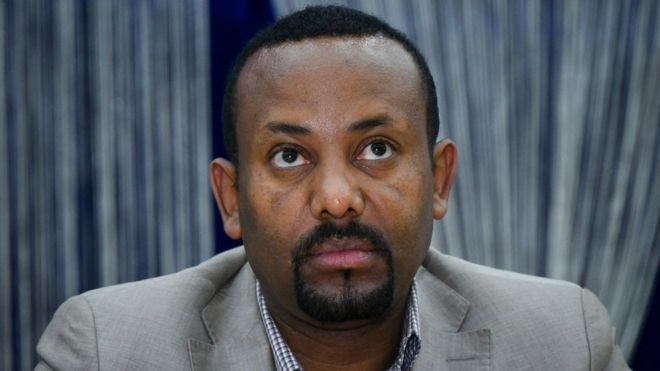Dubai
An attack on Saudi Arabia that shut 5 percent of global crude output caused the biggest surge in oil prices since 1991, after US officials blamed Iran and President Donald Trump said Washington was “locked and loaded” to retaliate.
The Iran-aligned Houthi movement that controls Yemen’s capital claimed responsibility for the attack, which damaged the world’s biggest crude oil processing plant. Iran denied blame and said it was ready for “full-fledged war”.
Two sources briefed on the operations of state oil company Saudi Aramco told Reuters it might take months for Saudi oil production to return to normal. Earlier estimates had suggested it could take weeks.
Oil prices surged by as much as 19 percent before coming off peaks. The intraday jump was the biggest since the 1991 Gulf War.
Enough stocks
Prices eased after Trump announced that he would release US emergency supplies, and producers around the world said there were enough stocks stored up to make up for the shortfall.
“There is reason to believe that we know the culprit, are locked and loaded depending on verification, but are waiting to hear from the Kingdom as to who they believe was the cause of this attack, and under what terms we would proceed!” Trump said on Twitter on Sunday.
US Energy Secretary Rick Perry pinned the blame squarely on Iran for “an attack on the global economy and the global energy market”.
“The United States wholeheartedly condemns Iran’s attack on Saudi Arabia and we call on other nations to do the same,” he said in a speech to an annual meeting in Vienna of the UN nuclear watchdog IAEA. He added that he was confident the oil market “is resilient and will respond positively”.
Denied blame
While Iran has denied blame for the attacks, its Yemeni allies have promised more strikes to come. Houthi military spokesman Yahya Sarea said the group carried out Saturday’s pre-dawn attack with drones, including some powered by jet engines.
“We assure the Saudi regime that our long arm can reach any place we choose and at the time of our choosing,” Sarea tweeted. “We warn companies and foreigners against being near the plants that we struck because they are still in our sights and could be hit at any moment.”
US officials say they believe that the attacks came from the opposite direction, possibly from Iran itself rather than Yemen, and may have involved cruise missiles. Wherever the attacks were launched, however, they believe Iran is to blame.
“There’s no doubt that Iran is responsible for this. No matter how you slice it, there’s no escaping it. There’s no other candidate,” a US official said on Sunday, speaking on condition of anonymity.
Saudi Arabia and Iran have been enemies for decades and are fighting a number of proxy wars, including in Yemen where Saudi forces have been fighting against the Houthis for four years.
Tension in the oil-producing Gulf region has dramatically escalated this year after Trump imposed severe U.S. sanctions on Iran aimed at halting its oil exports altogether.
Threats
For months Iranian officials have issued veiled threats, saying that if Tehran is blocked from exporting oil, other countries will not be able to do so either. However, Iran has denied any role in specific attacks, including bombings of tankers in the Gulf and previous strikes claimed by the Houthis.
Foreign Ministry spokesman Abbas Mousavi called the US accusations of Iranian involvement in Saturday’s attacks “unacceptable and entirely baseless”.
Russia and China both said it was wrong to jump to hasty conclusions about who was responsible for the attack. Britain also stopped short of ascribing blame but described the assault as a “wanton violation of international law”.
Washington has imposed its “maximum pressure” strategy on Iran since last year when Trump pulled out of an international deal that gave Tehran access to world trade in return for curbs on its nuclear programme.
US allies in Europe oppose Trump’s strategy, arguing that it provides no clear mechanism to defuse tensions, creating a risk that the foes could stumble into war.
Trump has said his goal is to force Iran to negotiate a tougher agreement and has left open the possibility of talks with President Hassan Rouhani at an upcoming UN meeting. Iran says there can be no talks until Washington lifts sanctions. Its foreign ministry said on Monday Rouhani would not meet Trump.
The giant Saudi plant that was struck cleans crude oil of impurities, a necessary step before it can be exported and fed into refineries. The attack cut Saudi output by 5.7 million barrels a day, or around half.
Biggest oil exporter
Saudi Arabia is not only the world’s biggest oil exporter, it has a unique role in the market as the only country with enough spare capacity to increase or decrease its output by millions of barrels per day, keeping the market stable.
Big countries such as the United States and China have reserves designed to handle even a major outage over the short term. But a long outage would make markets subject to swings that could potentially destabilise the global economy.
Russia and an OPEC source said on Monday there was no need for an extraordinary meeting of the Organisation of the Petroleum Exporting Countries (OPEC) and its allies, a group known as OPEC+ that has orchestrated a supply-curbing deal.
Russian Energy Minister Alexander Novak told reporters there was enough oil in commercial stockpiles to cover the shortfall.
-By Reuters




